 After integers, fractions and decimals are usually the next most frequently tested concepts in the GMAT Quant section. The good news is, the math itself is fairly simple: you’ve likely learned all the rules you need to know about working with fractions and decimals in middle and early high school math. The bad news is that these rules and properties have probably been gathering dust in some unvisited corner of your brain—and even if they haven’t, you’re going to have to apply them in new ways on the GMAT.
After integers, fractions and decimals are usually the next most frequently tested concepts in the GMAT Quant section. The good news is, the math itself is fairly simple: you’ve likely learned all the rules you need to know about working with fractions and decimals in middle and early high school math. The bad news is that these rules and properties have probably been gathering dust in some unvisited corner of your brain—and even if they haven’t, you’re going to have to apply them in new ways on the GMAT.
Never fear! In this post, we’ll tell you everything you need to know about fractions and decimals for the GMAT. We’ll give you a refresher on all the relevant rules and formulas, tips and tricks for every question you’ll see on them on the GMAT, and some example questions with thorough explanations so you can see these strategies in action.
GMAT Fractions: Rules to Know
Below are all the rules that you need to know about fractions for the GMAT.
Definition of a Fraction
A fraction is a visual representation of a number divided by another number. The top number of a fraction is called the numerator, and it’s the number being divided. The bottom number is called the denominator, and it’s the number that the top number is divided by.
In the fraction $n/d$, $n$ is the numerator (the top number) and $d$ is the denominator (the bottom number). The fraction 1/2, for example, is 1 divided by 2 or one-half.
Not sure how or what to study? Confused by how to improve your score in the shortest time possible? We've created the only Online GMAT Prep Program that identifies your strengths and weaknesses, customizes a study plan, coaches you through lessons and quizzes, and adapts your study plan as you improve.
We believe PrepScholar GMAT is the best GMAT prep program available, especially if you find it hard to organize your study schedule and don't want to spend a ton of money on the other companies' one-size-fits-all study plans.

0 can’t be the denominator in a fraction, because dividing by 0 is undefined.
Two fractions are equivalent when they represent the same number. For example: 2/8 and 4/16 are equivalent, because they both equal 0.25.
When both the numerator and the denominator can be be divided evenly by the same number, the fraction can be simplified into its lowest terms (the smallest equivalent fraction). The largest number that both the numerator and the denominator can be divided by is called the greatest common factor (GCF) or greatest common divisor (GCD). Dividing both by the GCD simplifies the fraction into its lowest form.
For example, 2 is the greatest common factor of both 2 and 8. For the fraction 2/8, when you divide the numerator and the denominator by 2, you get 1/4—the lowest or most simplified form of the fraction. When dealing with fractions in equations, you almost always want them to be in their simplest forms, so that they’re easier to do calculations with.
Multiplying and Dividing With Fractions
Multiplying with fractions is easy: you just multiply the numerators and multiply the denominators.
For example:
$7/10 × 4/9 = 28/90$ or $14/45$
To divide with fractions, “flip” the fraction after the division sign (called the divisor) so that the denominator becomes the numerator and vice versa, and then multiply with that number.
Example:
$${7/10} ÷ {4/9} = 7/10 × 9/4 = 63/40$$
This “flipped” version of a fraction is called its reciprocal or inversion. The reciprocal or inversion of any fraction $n$/$d$ is $d$/$n$ (where $n$ and $d$ ≠ 0).
Adding and Subtracting With Fractions
Two fractions with the same denominator can be added or subtracted easily. You simply add or subtract the numerators, and leave the denominators the same.
$$3/8 – 2/8 = 1/8$$
$$5/9 – 1/9 = 4/9$$
If you need to add or subtract with fractions that don’t have the same denominator, then you can do the opposite of simplifying and express them as equivalent fractions with the same denominator. As long as you multiply or divide the numerator and the denominator of a fraction by the same number, it will remain equivalent:
$$3/8 × 9/9 = 27/72$$
$$2/8 = 27/72$$
This gives us an always true rule, which is helpful in algebraic expressions:
$${x + y}/z = x/z + y/z$$
When adding or subtracting fractions with different denominators, multiplying the fractions so that the denominators represent the least common multiple (the lowest number that both denominators factor into) is usually the simplest way to go and makes doing calculations easier than working with larger numbers.
Example:
$$1/3 + 3/4$$
$$LCM = 12$$
$$1/3 × 4/4 = 4/12$$
$$3/4 × 3/3 = 9/12$$
$$1/3 + 3/4 = 4/12 + 9/12 = 13/12=1 1/12$$
By multiplying 3 and 4, we see that the LCM is 12. We then convert both fractions so that they both have a denominator of 12. Then it’s easy to add them together!

Want to improve your GMAT score by 60 points?
We have the industry's leading GMAT prep program. Built by Harvard, MIT, Stanford, and Wharton alumni and GMAT 99th percentile scorers, the program learns your strengths and weaknesses and customizes a curriculum so you get the most effective prep possible.

Mixed Numbers
A number made up of a whole number and a fraction (like 1 and 1/12 above) is called a mixed number. To change a mixed number into a fraction, multiply the whole number by the denominator and then add the result to the numerator. This then becomes the new numerator.
$$6 4/9 = {(6 × 9)+ 4}/9 = {54 + 4}/9 = 58/9$$
GMAT Decimals: Rules to Know
Below are all the rules you need to know about decimals for the GMAT.
Definition of a Decimal
Decimals and fractions are both ways of representing number values in between integers or whole numbers.
In the decimal system, the distance from the decimal point represents the place value of each number. For example, the number 412.735, has 4 in the “hundreds” place, 1 in the “tens” place, and 2 in the “ones” or “units” place; and then after the decimal, 7 in the “tenths” place, 2 in the “hundredths” place, and then five in the “thousandths” place. Here’s a table illustrating this information:
| 4 | 1 | 2 | . | 7 | 3 | 5 |
| Hundreds place | Tens place | Units place | [decimal] | Tenths place | Hundredths place | Thousandths place |
The Zero Rule
After you pass the decimal point, you can add an infinite number of zeros to the end of a number:
$$1.435 = 1.4350 = 1.4350000000000000000 = 1.43500000000000000000000000000000000000000$$
This rule only applies to after the end of the number after the decimal point:
$$1435 ≠ 14350$$
$$1435 = 1435.0 = 1435.0000000000000000000000000$$

Adding and Subtracting With Decimals
To add or subtract two decimals, the decimal places of each need to line up. You can use the zeros rule above if one number has fewer digits to the after decimal place than the other:
7.872 + 6.30285 =
7.87200
+ 6.30285
= 14.17485
Multiplying and Dividing With Decimals
When multiplying decimals, do not line up the decimal point: the decimal gets inserted afterward. Instead, multiply the two numbers as if they were whole numbers. Once you have the product, it’s time to put the decimal back in.
But how do you figure out where the decimal place goes? The rule is that you add up the amount of numbers after the decimal of each number you multiplied, and that sum is the number of decimal places that should be in the product:
1.56 (two numbers after the decimal)
× 2.3 (one number after the decimal)
= 3.588 (three decimals—sum of one and two above)
To divide any number (a dividend) by a decimal (the divisor) using long division, move the decimal point of the divisor to the right however many places it takes to get to a whole number, and then move the decimal point in the dividend over by that many places as well. If there’s still a decimal left in the dividend after this, make sure you place it directly above the dividend in the answer.
Want to Identify YOUR GMAT Strengths and Weaknesses?
Our proprietary GMAT Diagnostic Assessment creates a customized study plan for you that takes you from registration all the way to test day! It is included with every account and proven to significantly maximize your score.
Get your personalized assessment as part of your 5 day risk-free trial now:

Finally, do the division as you normally would. For example,
90.625 ÷ 12.5 becomes 906.25 ÷ 125
Then you do the long division with 906.25 as the dividend and 125 as the divisor, making sure to place the decimal in the answer directly above its place in the dividend.
Converting Decimals to Fractions
Every decimal can be expressed as a fraction with these steps:
- Move the decimal point over however many places to the right until it becomes a whole number
- Use that as the numerator
- Place in the denominator the power of 10 that corresponds to however many places you moved the decimal over:
$$0.5 = 5/10$$
$$0.05 = 5/100$$
0.005 = 5/1000 or 1/200
Another way to think of it is that the number of places you move the decimal to the right to make the numerator a whole number is the number of 0’s you’ll add after 1 in the denominator.
Numbers less than -1 or greater than +1 with decimals can be expressed as fractions using the above rule in combination with the mixed number rule:
$$7.5 = 7 5/10$$
$$= {(7 × 10) + 5}/10$$
$$= [70 + 5]/10 = 75/10$$
And this can be simplified:
$$75/10 = 15/2$$
$$7.5 = 15/2$$
Converting Fractions to Decimals
When you plug in a fraction as a division problem into a calculator, it automatically gives you the decimal equivalent. Unfortunately, we don’t have access to a calculator on the GMAT Quant section, but the manual conversion isn’t too hard.
You can always find the decimal equivalent of a fraction with long division, by using the numerator as the dividend and the denominator as the divisor. But there’s an alternative method that can be handy as well.
First, find a number you can multiply the denominator of the fraction by to make it 10, or 100, or 1000, or any 1 followed by 0s. Next, multiply both numerator and denominator by that number to get its equivalent expression. Finally, write down just the top number, putting the decimal point in the corresponding place: one space from the right hand side for every zero in the bottom number.
Here’s an example using the fraction 3/4:
$$3/4 = ?/100$$
$$4 × 25 = 100$$
$${3 × 25}/{4 × 25} = 75/100$$
$$= 0.75$$

Scientific Notation of Decimals
“Moving over” decimal places with powers of 10 is a useful concept. Sometimes, numbers are expressed as the product of a number multiplied by 10 to a certain power. The power represents how many places you need to “move” the decimal point to get to its decimal expression. The sign of the exponent indicates which direction: a positive exponent moves the decimal over to the right, and a negative exponent moves it to the left.
Examples:
$$0.0489 = 4.89 × 10^{-2}$$
$$60235 = 6.0235 × 10^4$$
$$540 = 5.4 × 10^2$$
$$29 = 2.9 × 10^1 = 2.9 × 10$$
Terminating and Recurring Decimals
Terminating decimal GMAT questions sound scary if you don’t know what a terminating decimal is, but it’s actually deceptively simple.
All of the decimals in the examples above have an end. They are called terminating decimals because there aren’t an infinite amount of numbers after the decimal point. Any terminating decimal is can be represented as a fraction with a power of ten in the denominator. For example, 0.0462 = 462/10000 = 231/5000.
It’s possible to have an infinite amount of numbers after the decimal point. 1/3 is an example of a recurring decimal, as we can see when we convert it with long division:
$$1/3 = 0.333333333… = 0.\ov 3$$
The above are equivalent expressions: Both the ellipses and the line above the three indicate that the threes after the decimal point go on forever.
Recurring decimals are tough to work with. Knowing which fractions have infinite decimal expressions, like 1/3 and 1/9, helps significantly in deciding whether to convert it into a decimal or leave it as a fraction in solving problems.
The Key Rule for Fractions That Are Terminating Decimals
If the prime factorization of the denominator of a fraction has only 2 and/or 5, then it can be written as something over a power of ten, which means its decimal expression terminates.
If the denominator doesn’t have only 2 and/or 5 as factors, then the decimal expression is recurring. Here are some examples:
1/24 is recurring (24 = 23 × 3, so 24 has a prime factor of 3 in addition to 2)
1/25 is terminating (25 = 52)
1/28 is recurring (28 = 22 x 7, so there’s a prime factor of 7 in addition to 2)
1/40 is terminating (40 = 23 x 5)
1/64 is terminating (64 = 26)
Importantly, this rule only applies for fractions in their simplest forms. For example, 9/12 terminates, even though 12 has 3 as a prime factor, because 9/12 is really just 3/4, which is 3/22
One key way to express this rule is that that the denominator must be some value equivalent to 2m5n, where $m$ and $n$ are integers. So any fraction that can be expressed as $x$/2m5n will terminate, and any other fraction won’t.
Note that the number 1 as a denominator satisfies those requirements, as any number to a power of 0 equals 1, and 0 is an integer, so it can be the value of $m$ and $n$:
1 = 2050
If you need a refresher on what prime factorization is, head to our guide to integer properties for the GMAT, which includes an entire section devoted to explaining prime factorization.
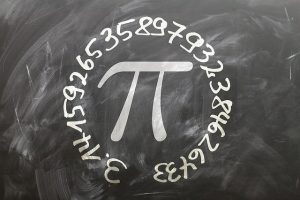
GMAT Fractions Questions
Below are the key kinds of GMAT fraction questions. Note that fractions as a concept overlap with some of the other types of questions, such as rate questions and average questions. The line is often blurry between fractions and decimals as well, and sometimes actually converting the given value to decimals from fractions or vice-versa can make the problem clearer. We’ll see an example of that below.
Example GMAT Fractions Question 1: Problem Solving and Averages
Here’s a GMAT averages problem involving fractions:
If the average of the 4 numbers ($n$+2), (2$n$-3), (4$n$+1) and (7$n$+4) is 15, what is the value of $n$?
(A) 11/14
(B) 4
(C) 32/7
(D) 11
(E) 13
This is a fraction question baked into an averages question with algebra. As you may know, the formula for averages is simply to add all the numbers together and then divide by the total number of numbers, which is 4 in this case. This gives us the below fraction:
$${(n+2) + (2n-3) + (4n+1) + (7n+4)}/4$$
We also know from the question that the average is 15, so that equation is equal to 15:
$${(n+2) + (2n-3) + (4n+1) + (7n+4)}/4 = 15$$
To simplify this equation, let’s get rid of the fraction by multiplying both sides by 4 (the denominator):
$${{(n+2) + (2n-3) + (4n+1) + (7n+4)}/4} × 4 = 15 × 4$$
$$(n+2) + (2n-3) + (4n+1) + (7n+4) = 60$$
Since the right side of this equation is all addition and subtraction now, we don’t need the parentheses. Let’s simplify and solve:
$$14n + 4 = 60$$
$$14n = 56$$
$$n = 56/14$$
$$n = 4$$
(B) is the answer.

Example GMAT Fractions Question 2: Problem Solving and Rates
Here is a fraction problem in the context of a GMAT rate problem:
A small water pump would take 2 hours to fill an empty tank. A larger pump would take 1/2 hour to fill the same tank. How many hours would it take both pumps, working at their respective constant rates, to fill the empty tank if they began pumping at the same time?
(A) 1/4
(B) 1/3
(C) 2/5
(D) 5/4
(E) 3/2
First, let’s make sure we understand what the numerator and the denominator represent in these fractions. The rate is per hour, so we’re talking about tanks (the numerator) per hour (the denominator).
So the rate of the small pump is 1/2 tank/hour, and the rate of the larger pump is 2 tank/hour, or 2/1 (in fraction expression). Together, the combined rate of the two pumps is:
$$1/2 + 2/1$$
You probably know this off the top of your head, but just to illustrate the addition of fractions, I’ll show you how to do it out. We need the lowest common multiple of the denominators so that we can render them both as expressions with the same denominator.
The LCM is 2, so:
$$2/1 + 2/1 = 1/2 + 4/2 = 5/2 \tanks \per \hour$$
To get to the time it takes to fill the tank, we need to divide the job (filling 1 tank) over their collective rate (5/2 tanks per hour).
Hence together they will fill the tank in $1/(5/2)$. Let’s use the rule about fraction division—that it’s simply multiplication with the numerator and denominator flipped—to simplify this:
$$1/(5/2) = 1 × 2/5$$
$$= 2/5 \hours$$
The answer is (C).

Example GMAT Fractions Question 3: Problem Solving and Probability
A basic knowledge of fractions is required for GMAT probability problems as well. Here’s an example:
In a certain board game, a stack of 48 cards, 8 of which represent shares of stock, are shuffled and then placed face down. If the first 2 cards selected do not represent shares of stock, what is the probability that the third card selected will represent a share of stock?
(A) 1/8
(B) 1/6
(C) 1/5
(D) 3/23
(E) 4/23
As with many questions on the GMAT, this problem is simpler than the lengthy wording makes it sound.
We can think of the first 2 cards as cards that have already been turned “face up” and are therefore out of the pile. So the probability of picking a stock card goes from 8/48 to 8/46. Let’s simplify:
$$8/48 = 4/23$$
(E) is the answer.

Example GMAT Fractions Question 4: Problem Solving With Algebra
Sometimes it will be useful to come up with your own algebraic equation to solve a GMAT fractions question. Here’s an example:
The total price of a basic computer and printer is 2,500 dollars. If the same printer had been purchased with an enhanced computer whose price was 500 dollars more than the price of the basic computer, then the price of the printer would have been 1/5 of that total. What was the price of the basic computer?
(A) 1500
(B) 1600
(C) 1750
(D) 1900
(E) 2000
Let the price of basic computer be $c$, and the price of the printer be $p$.
What do we know? We know that $c$+$p$=2500. We also know that the price of the enhanced computer will be $c$+500, since the question stem tells us that it’s 500 dollars more than the basic computer. So the total price of the enhanced computer and the printer is 500 dollars more than 2500, or 3000 dollars.
Now, we are told that the price of the printer is 1/5 of that new total $3000 price. Let’s figure that out:
$$p = 1/5 × $3000$$
$$= $3000/5$$
$$= $600$$
Now that we know how much $p$ (the printer) is, we can plug this value in the first equation to solve for $c$ (the basic computer):
$$c + $600 = $2500$$
$$c = $2500 – $600$$
$$c = $1900$$
The answer is (D).

Example GMAT Fractions Question 5: Data Sufficiency
Here is a relatively simple data sufficiency fraction problem:
Malik’s recipe for 4 servings of a certain dish requires 1 1/2 cups of pasta. According to this recipe, what is the number of cups of pasta that Malik will use the next time he prepares this dish?
1. The next time he prepares this dish, Malik will make half as many servings as he did the last time he prepared the dish.
2. Malik used 6 cups of pasta the last time he prepared this dish.
(A) Statement (1) ALONE is sufficient, but statement (2) alone is not sufficient to answer the question asked.
(B) Statement (2) ALONE is sufficient, but statement (1) alone is not sufficient to answer the question asked.
(C) BOTH statements (1) and (2) TOGETHER are sufficient to answer the question asked, but NEITHER statement ALONE is sufficient to answer the question asked.
(D) EACH statement ALONE is sufficient to answer the question asked.
(E) Statements (1) and (2) TOGETHER are NOT sufficient to answer the question asked, and additional data specific to the problem are needed.
So all we know from the prompt is that 4 servings of Malik’s dish require 1 and 1/2 or in decimal expression 1.5 cups of pasta.
Statement 1 is insufficient because it just says: “Malik will make half as many servings as he did the last time he prepared the dish.” However, we have no idea how many servings Malik prepared last time. Since we don’t know the servings, we can’t find how much pasta is required. Hence, insufficient. Eliminate (A) and (D).
Statement 2 says Malik used 6 cups of pasta the last time he prepared this dish. Just looking at this statement by itself (without statement 1), it doesn’t really indicate anything: if 6 cups of pasta was the last time, we clearly can’t say how many cups of pasta Malik will use the next time. Hence, insufficient. Eliminate (B).
Now, let’s combine statements 1 and 2. We know that Malik used 6 cups of pasta the last time and that he will make half as many servings as he did the last time. That being the case, Malik will clearly require 3 cups of pasta next time (1/2 of 6 = 3). Sufficient.
Thus, (C) is the answer.

Example GMAT Fractions Question 6: Data Sufficiency With Algebra
Here’s a slightly more advanced data sufficiency question with fractions, involving algebra:
Is $x$ between 0 and 1?
1. $x$ is between -1/2 and 3/2
2. 3/4 is 1/4 more than $x$
(A) Statement (1) ALONE is sufficient, but statement (2) alone is not sufficient to answer the question asked.
(B) Statement (2) ALONE is sufficient, but statement (1) alone is not sufficient to answer the question asked.
(C) BOTH statements (1) and (2) TOGETHER are sufficient to answer the question asked, but NEITHER statement ALONE is sufficient to answer the question asked.
(D) EACH statement ALONE is sufficient to answer the question asked.
(E) Statements (1) and (2) TOGETHER are NOT sufficient to answer the question asked, and additional data specific to the problem are needed.
This question is basically asking us if $x$ is a fraction/decimal between 0 and 1. Let’s work methodically through the statements.
Statement 1 is insufficient because there are many values not between 0 and 1 that satisfy the condition of being between -1/2 and 3/2. If that’s not obvious, you might want to convert the statement into decimals. In decimal form, all statement 1 is telling us is that $x$ is between -0.5 and 1.5. So if $x$ was 1.1, 1.2, 1.3, -0.4, etc., it would be between -0.5 and 1.5 but not between 0 and 1. Hence, statement 1 is insufficient. Eliminate (A) and (D).
Now let’s test statement 2. Statement 2 is just an overcomplicated way of saying that:
$$x = 3/4 – 1/4$$
So we solve for $x$ very easily:
$$x = 3/4 – 1/4 = 1/2$$
1/2 is between 0 and 1, so statement 2 is sufficient and the answer is (B).
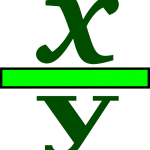
GMAT Decimal Questions
Below are the key kinds of GMAT decimal questions. Like fractions, decimals questions overlap with other kinds of questions, and often come with a fraction aspect as well. The GMAT particularly loves to test you on the concept of terminating versus recurring decimals, so we’ve included several examples of that below.
Example GMAT Decimal Question 1: Problem Solving With Terminating and Recurring Decimals
Every day a certain bank calculates its average daily deposit for that calendar month up to and including that day. If on a randomly chosen day in June the sum of all deposits up to and including that day is a prime integer greater than 100, what is the probability that the average daily deposit up to and including that day contains fewer than 5 decimal places?
(A) 1/10
(B) 2/15
(C) 4/15
(D) 3/10
(E) 11/30
This question tests you on both fractions and decimals. One key rule to remember for this question is that a fraction in its simplest form with a denominator that has only 2 and/or 5 its prime factors will convert to a terminating decimal:
x/2m5n = terminating decimal
Head back to the section on terminating and recurring decimals above if you need more of a refresher.
Now, onto the question.
First, let’s rephrase it algebraically. Let $p$ = the prime integer that’s greater than 100, which = the sum of all the deposits up to and including the day. Let $d$ be the number of days, up to and including the chosen one ($d$ = 1 would be June 1, $d$ = 30 would be June 30).
The average daily deposit up to and including the chosen day will be the sum of the deposit divided by the number of days, or $p$/$d$.
So the question becomes: What is the probability that $p$/$d$ will have less than 5 decimal places?
Now that we know what we’re being asked, the next step is to hone in on only the days that would have a terminating decimal, since those that yield a recurring decimal will by definition have more than 5 decimal places.
As stated above, to be a terminating decimal, $p$/$d$ must = x/2m5n, so $d$ must = 2m5n. And luckily, because the numerator $p$ is a prime number, all the possible values of $p$/$d$ will be in their simplest forms, so we can test the denominator without worrying that the terminating decimal fraction rule might not apply. .
The days in June (values for $d$) that can be expressed as 2m5n and are thus not recurring are day 1, 2, 4, 5, 8, 10, 16, 20, and 25. You can figure this out by doing a prime factorization of each of the 30 days in June, but as long as you’re still know your multiplication tables, you should be able to look at a number between 1 and 30 and realize almost right away if it has a prime factor other than 2 and/or 5.
So now, of days 1, 2, 4, 5, 8, 10, 16, 20, and 25, we have to check if any of them have more than 5 decimal places, which is possible even though they do terminate. We can do this using the rule for converting fractions to decimals. 5 decimals is the ten thousandths place, so to have 5 decimal places or less, $p$/$d$ × 10,000 must yield an integer:
p/d × 10000 = an integer (nothing after the decimal point)
For this to work, $d$ will have to be a factor of 10,000. As it happens, all of these numbers go into 10,000 (10,000 is divisible by 1, 2, 4, 5, 8, 10, 16, 20, and 25), so for all 9 of these $d$’s, $p$/$d$ = a number with less than 5 decimals.
Thus, out of all of the days of June, there are 9 values for $d$ for which $p$/$d$ has less than 5 decimal places, so the probability is 9/30 = 3/10.
(D) is the answer.

Example GMAT Decimal Question 2: Problem Solving and Scientific Notation Format
Here’s an example of a GMAT terminating decimals question in which knowledge of scientific notation comes in handy.
If $d$ = (1)/[(23)(57)] is expressed as a terminating decimal, how many nonzero digits will $d$ have?
(A) One
(B) Two
(C) Three
(D) Seven
(E) Ten
First, let’s multiply both the numerator and the denominator by 24, so that we can get the exponents of both the base numbers in the denominator to be the same:
$$1/{2^3×5^7} × 2^4/2^4 = 2^4/{2^7 × 5^7}$$
Now we can multiply the bases together, and put the exponent 7 with the result:
$$2^4/{2^7 × 5^7} = 2^4/10^7 = 16/10^7$$
16/107 is the same as 16 × 10-7
16 × 10-7 is just the scientific notation for the decimal 0.0000016 (you move the decimal to the left 7 times). Thus, $d$ will have two non-zero digits, 16, when expressed as a decimal. The answer is (B).
Example GMAT Decimal Question 3: Problem Solving and Estimation
This is a great example of a GMAT decimal question in which you should use your powers of estimation instead of solving it:
1+0.0001/0.04+10
The value of the expression above is closest to which of the following?
(A) 0.0001
(B) 0.001
(C) 0.1
(D) 1
(E) 10
We don’t want those plus signs in this fraction—let’s do the additions and see what the resulting fraction looks like:
$$1+0.0001/{0.04+10} = 1.0001/10.04$$
Now we can see that these tiny little decimals are negligible: basically, the numerator is 1 and the denominator is 10. So this fraction is virtually 1/10, which equals 0.1. (C) is the answer.

Example GMAT Decimal Question 4: Data Sufficiency and Terminating Decimals
Lots of GMAT data sufficiency decimal questions will ask you if a certain equation or variable is a terminating decimal. Here’s an example:
Is $x$/$y$ a terminating decimal?
1. $x$ is a multiple of 2
2. $y$ is a multiple of 3
(A) Statement (1) ALONE is sufficient, but statement (2) alone is not sufficient to answer the question asked.
(B) Statement (2) ALONE is sufficient, but statement (1) alone is not sufficient to answer the question asked.
(C) BOTH statements (1) and (2) TOGETHER are sufficient to answer the question asked, but NEITHER statement ALONE is sufficient to answer the question asked.
(D) EACH statement ALONE is sufficient to answer the question asked.
(E) Statements (1) and (2) TOGETHER are NOT sufficient to answer the question asked, and additional data specific to the problem are needed.
Statement 1 indicates that $x$, the numerator, is a multiple of 2, which has nothing to do with the terminating or recurring property of decimals—that’s based on the denominator.
We can test this by plugging in multiple-of-2 values for $x$: 2/4 is a terminating decimal, but 4/6 is a recurring decimal. So, statement 1 is not sufficient. Eliminate (A) and (D).
Statement 2 says that y is a multiple of 3. You might be tempted to say that this violates the denominator = 2m5n rule, but be careful! Statement 2 gives no information about whether or not $x$ and $y$ have common factors. For instance, 12 is a multiple of 3, but 9/12 is terminating, since it simplifies into 3/4. But 8/12 is recurring, as it simplifies 2/3. into So statement 2 is also not sufficient. Eliminate (B).
Now, let’s plug in numbers to test statement 1 and 2 together. 4/9 satisfies both the statements and it’s recurring, but 18/24 also satisfies both requirements and it’s terminating. So even together the statements are not sufficient and the answer is (E).

Tips for GMAT Fractions and Decimals Questions
Below are the key tips for mastering fraction and decimal questions on the GMAT.
#1: Memorize the Decimal Conversion for All Single-Digit Fractions
When it comes to fractions, being able to convert them to and from decimals with ease will help you get the correct answer faster on many different kinds of GMAT questions. Just because a question is ostensibly asking about medians or areas or probability doesn’t mean that you won’t need to work with fractions at some point to solve the question.
Here’s the conversion for 1/2 through 1/9:
1/2: 0.500
1/3: 0.333
1/4: 0.250
1/5: 0.200
1/6: 0.167 (half of 1/3)
1/7: 0.143 (just need to know this one)
1/8: 0.125 (half of 1/4)
1/9: 0.111
#2: Memorize the Terminating Decimal Rule for Fractions
In addition to the basic conversion, take some time to memorize the rules and properties sections above—especially the x/2m5n rule for terminating decimals.
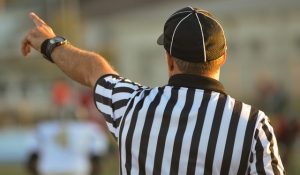
#3: Convert Freely Between Fractions and Decimals as Needed
By the time you take the GMAT, you should be able to fluently convert fractions to decimals or vice versa, depending on what will make a given problem easier. As you do more and more practice questions, you’ll become better at detecting which expression will be the easiest to use to solve the question. The GMAT will often give you the format that is harder to work with to start, as they are testing both your fluency with fractions and decimals and your ability to come up with the best route for solving the problem on your own.
For example, if you’re trying to determine where a variable x falls on the number line, it’s probably easier to work in decimals than in fractions. On the other hand, if you’re given a number like 0.111111111111111 and you have to do algebra with it, it’s probably easier to use 1/9—especially since the answer options will likely be spaced far enough apart that .000000001 of a difference isn’t going to leave you stuck between options.
Remember, you don’t have a calculator for the Quant section, so if you encounter a question on the GMAT that seems impossible to solve without one, there’s almost always a rule, property, or different form of expression that you can use to make it easier. Keep an eye out for strange wording that’s obscuring a very basic principle, and try converting the given fractions to decimals or vice versa if you’re stuck.
#4: Look at the Answer Options Before Solving
In the terminating decimal GMAT question about what the fraction with those tiny decimal points was closest in value to, you may have been tempted to solve for the exact value. But a quick glance at the answer options, which are all spaced out by a power of ten, tells you that all you have to do is get the location of the decimal point correct—not the exact value. That’s a pretty wide margin.
You should always look at the answer choices before even beginning to solve a problem—they’ll clue you in to the right approach.
Whenever you see tricky-looking decimals with widely varying answer choices, as in the terminating decimal GMAT question above, that best approach might be simply to estimate.

#5: Don’t Solve Further Than You Need To
Speaking of approaches, as with the first terminating decimal GMAT question, in the example of Malik’s serving dish you may have been immediately tempted to find how many cups of pasta are needed per serving. 4 servings of the dish required 1.5 cups, so the amount of cups per serving is 1.5/4, or 15/40 when we multiply both numerator and denominator by ten to get rid of the decimal in the fraction. This simplifies to 3/8 a cup of pasta per serving.
But this information is actually useless for finding sufficiency, as the two statements gave us everything we needed to solve the problem of how many cups of pasta Malik will use the next time he makes the dish.
Bottom line: Glance at the answer choices first, and then focus on solving only what you need to solve to get to one answer choice.
What’s Next?
Another key topic to become familiar with for the GMAT Quant section is integers.
For more general advice, check out our 10 tips to master the Quant section.
If you’re looking for more tips, here’s our list of the best tips and shortcuts for doing well on the Quant section.
Happy studying!
 PrepScholar GMAT
PrepScholar GMAT